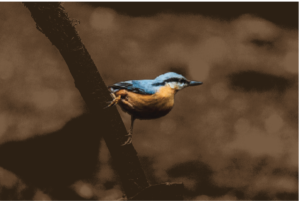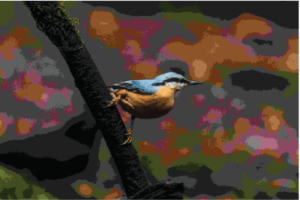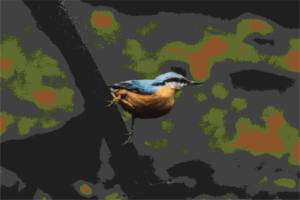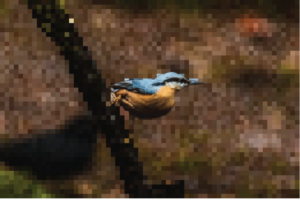Premise
How can the supply chain’s carbon footprint of movies on streaming platforms be reduced with computer vision and intelligent data compression?
Synopsis
Nature documentaries teach us many things about the natural world from which many people are effectively shielded in the Western world. For many people, it is a way to reconnect with nature. These documentaries are gradually teaching their audiences about the influence of humans on the environment, which is excellent. Nevertheless, despite this, there is almost no public awareness of the impact of data. It becomes clear that even though data is virtual by nature, we will reach the point where digital concerns hit physical constraints (Schrader, 2020).
Streaming movies is the most polluting of all internet processes because films are large files to store and download (Cisco, 2022). This blog post will be about the methods I’ve experimented with for capturing nature that requires the least amount of data.
substantiation
Nature documentaries are essential for comprehending and learning about the natural world. In recent years, they have also demonstrated the influence of human existence on nature and our impact on it. On the other hand, the documentary’s carbon footprint is omitted from the discussion. Countless data centers contribute to pollution and are hidden beneath the awe-inspiring 4k footage of nature. When hosted online, larger files, such as high-definition videos, impact more significantly. Even if we find the most space-efficient way to store data that the laws of physics will allow, we will still run out of space in a few centuries if we keep generating digital data at the rate that we are right now (Sebastian, 2020).
According to Cisco, video streaming accounted for 80% of all internet traffic in 2021 (Cisco, 2022). As a result, it is becoming our primary medium of online consumption, making it a significant role in pollution. In addition, people are growing increasingly intertwined with the digital world and using video as the primary source to interact with nature. More than 8 million data centers worldwide are purging metric tons of hardware, draining 200 terawatt-hours (TWh) of electricity each year (Jones, 2018), and emitting as much carbon as the global aviation sector. 2019 (McNerney, 2019). Although technological improvements are difficult to anticipate, numerous models indicate that data center energy use will consume more than 10% of the global electrical supply by 2030. (Jones, 2018) Because we only see it through our devices, the Internet can appear different from the physical world, but the two are inextricably intertwined. For example, data center structures have accounted for 60% of global electricity demand over the last 25 years (Jones, 2018).
One technique is to reduce the amount of data required within files, reducing the amount of energy necessary to stream. Compression is the most well-known method of data compression (Mahdi,2012). defines compression as reducing data size to conserve space or transmission time. Common compression file types include mp4 and jpg. However, most compression does not educate the spectator about the medium.
For this project, I collaborated with and interviewed a documentary filmmaker with a video experience that allowed me to get immediate feedback on how different types of scenarios should be shot. Another advantage of collaborating with an experienced filmmaker is the direct feedback I can obtain from overall product use. In addition to product user feedback, there will be user testing with the product’s end-users, in this case, documentary watchers, to conclude if the visual reduction is effective in numbers and to inform individuals about the link between excessive data and harmful environmental consequences.
prototypes and experiments
Image experiments
My initial experiment involved lowering its image quality with a bird as the primary subject of this shot. Since you could make a tale about the bird without all the background details, I experimented with keeping the bird focused while decreasing the background. To conduct this experiment, I used object segmentation to identify the bird. “Object Segmentation or Image segmentation is termed as categorizing each pixel value of an image to a particular class.” (Vyas, 2021) This means that computer vision systems can help achieve tasks like recognizing objects; one of the implementations of this system is within Self-Driving cars. Autonomous driving is a highly complex task that needs real-time perception, analysis, and change. Segmentation identifies objects like cars, traffic signs, pedestrians, and signs to give some examples (Vyas, 2021). after the segmentation, I took it out of the image, downsized the background, and finally pasted the bird back in. The tests shown here demonstrate several reduction strategies and the viability of a decline in Bites.
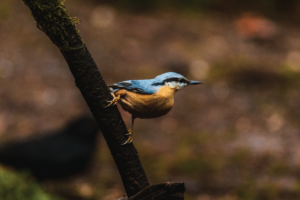
To decrease the amount of data from the backgrounds, I used different properties of the OpenCV library. The results above show Quantization is the process of reducing the number of distinct colors in an image, in this case, the two most dominant colors within the picture. Other techniques are lowering the image quality and pixel density or removing the background. Removing the whole background reduced almost 70% of the file size compared to the original.
Film experiments
I was intrigued by the significant data reduction and the aesthetic of the background being completely removed because the bird is now the sole subject of the image. To explore how this method might function in motion, I was motivated to try it on a movie rather than just still images.
Here are a few screenshots from the documentary Our Nature and a brief movie clip without the background (https://youtu.be/LOB6u7-zsZw).

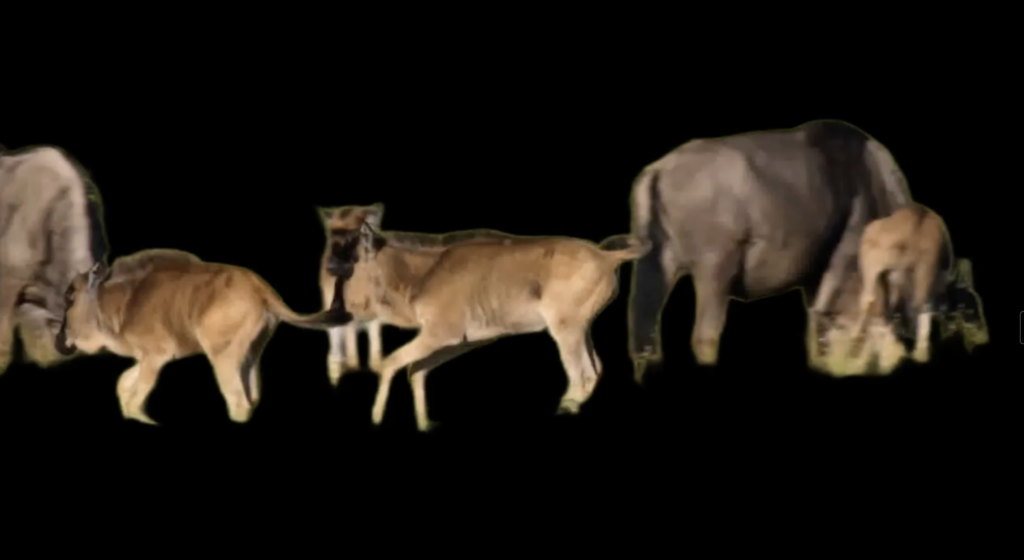

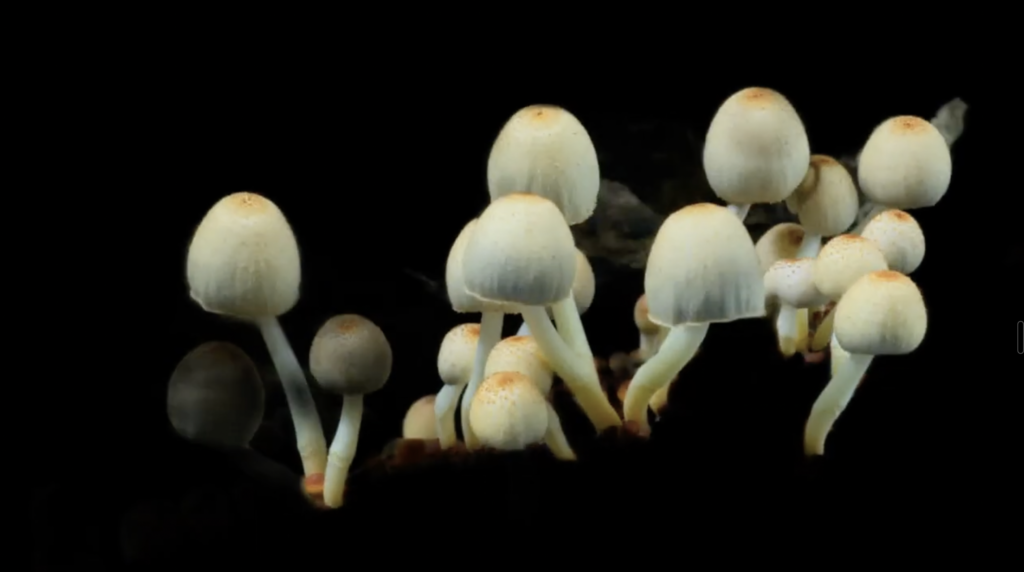
An engaging dialogue was sparked by watching the edited movie with peers and the filmmaker. You will view the subject matter differently and appreciate the film’s soundscape more. You need to gain more information in ways other than the images because the subjects are now the only focus in what is essentially a void. With this edit, I modify not only the frames of the movie but also the storytelling potential of this film because the image appears uncanny in comparison to typical nature movies.
Another point during the discussion was the energy consumption of the technique of the background deletion since not only does this movie already exist, by adding a new layer of computational power on top of the original film. Unfortunately, this extra step only adds more data and processing power to a final product by decreasing data. With this in mind, I sought to devise a way to eliminate the issue at its root by creating a camera that captures fewer data.
Camera prototype
I wanted to create a camera device capable of intelligent data compression, and real-time computer vision reduces the data problem at the root of the problem. For this, I needed a portable but capable computer to help me process data. For this, I choose the Raspberry Pi. This is because the Raspberry Pi is a capable machine that can run Python native and is a modular system to add attachments to. To make the Raspberry pi more function as a camera, I added a touchscreen and a high-quality sensor with a 3d-printed mount that can use regular camera lenses to capture data.
I developed a simplified background-removal application for the Raspberry Pi’s software and traveled to a nature reserve with the filmmaker to use the prototype camera to record wild cows.
A screenshot down below and the link to the video (https://youtu.be/T2QWzuRRI_I).
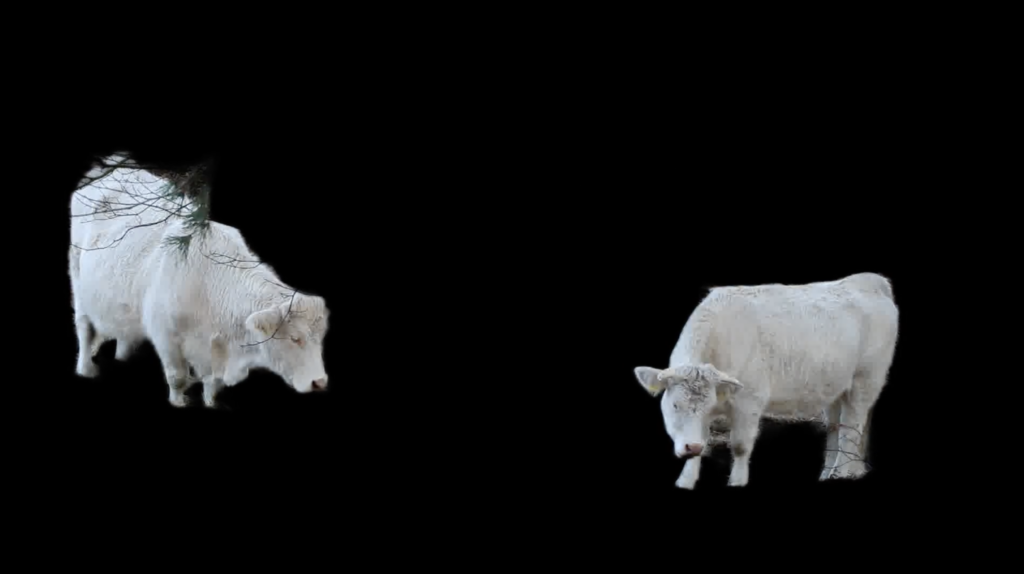
Conclusion
Even while the software isn’t flawless, it casts a new perspective on how we might take pictures, enjoy them, and use them more carefully. The composition’s main theme is also reduced to just the subject because of the black background. To continue with this project, I want to conduct an additional study on the data that will be saved and how this idea would operate on a documentary that was generated utilizing this method. The purpose of the documentary is to raise awareness of the harmful effects of data collection on the ecosystem and to question the need to always capture the full HD ourselves.
Sources
Bradski, G. (2000). The OpenCV Library. Dr. Dobb’s Journal of Software Tools.
Cisco. (2022). VNI Complete Forecast Highlights. https://www.cisco.com/c/dam/m/en_us/solutions/service-provider/vni-forecast-highlights/pdf/Global_2022_Forecast_Highlights.pdf
Jones, N. (2018). How to stop data centres from gobbling up the world’s electricity. Nature, 561(7722), 163–166. https://www.nature.com/articles/d41586-018-06610-y
Mahdi, O.A.; Mohammed, M.A.; Mohamed, A.J. ( 2012). “Implementing a Novel Approach an Convert Audio Compression to Text Coding via Hybrid Technique.” International Journal of Computer Science Issues. 9
McNerney, M. (2019). The Data Center Dilemma: Is Our Data Destroying the Environment? Data Center Knowledge | News and Analysis for the Data Center Industry. https://www.datacenterknowledge.com/industry-perspectives/data-center-dilemma-our-data-destroying-environment
Schrader, N. (2020). Acid Clouds. KABK and a participant in the Design Research Club of the Design and the Deep Future Lectorate 2018-2019. https://www.kabk.nl/en/lectorates/design/acid-clouds-niels-schrader
Sebastian, L ( 2020, 4 february). Will the Internet run out of SPACE?. Linus Media Group. https://youtu.be/OQgVrh871hs
Vyas, K. (2021). Object Segmentation or Image segmentation is termed as categorizing each pixel value of an image to a particular class. Medium. https://medium.com/visionwizard/object-segmentation-4fc67077a678
